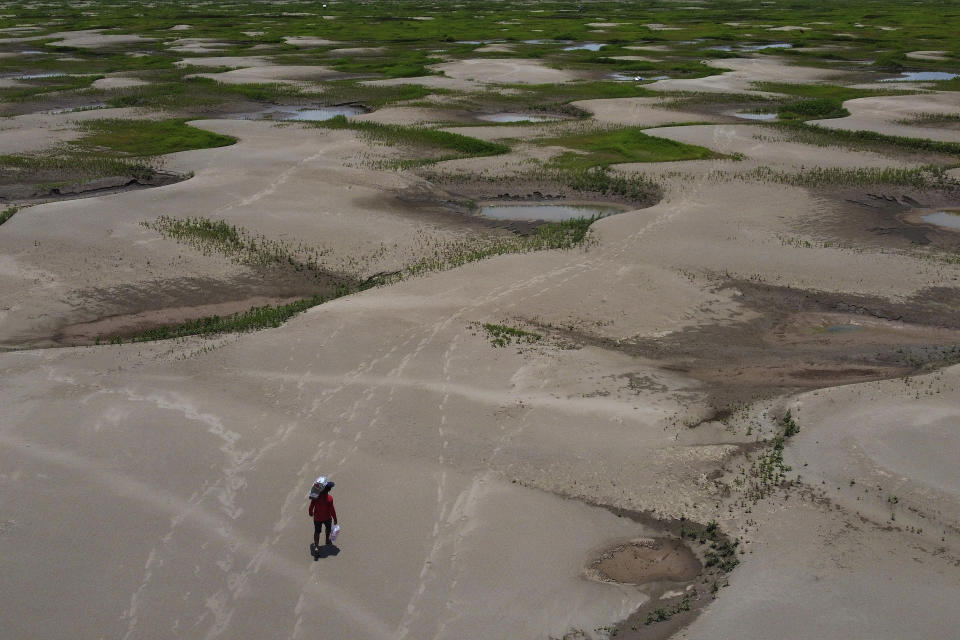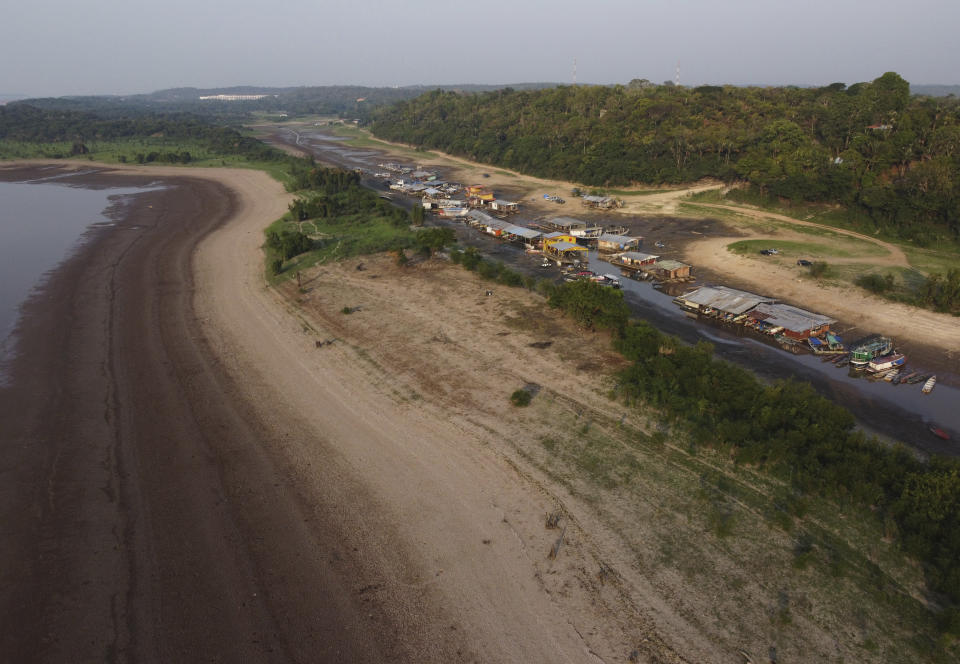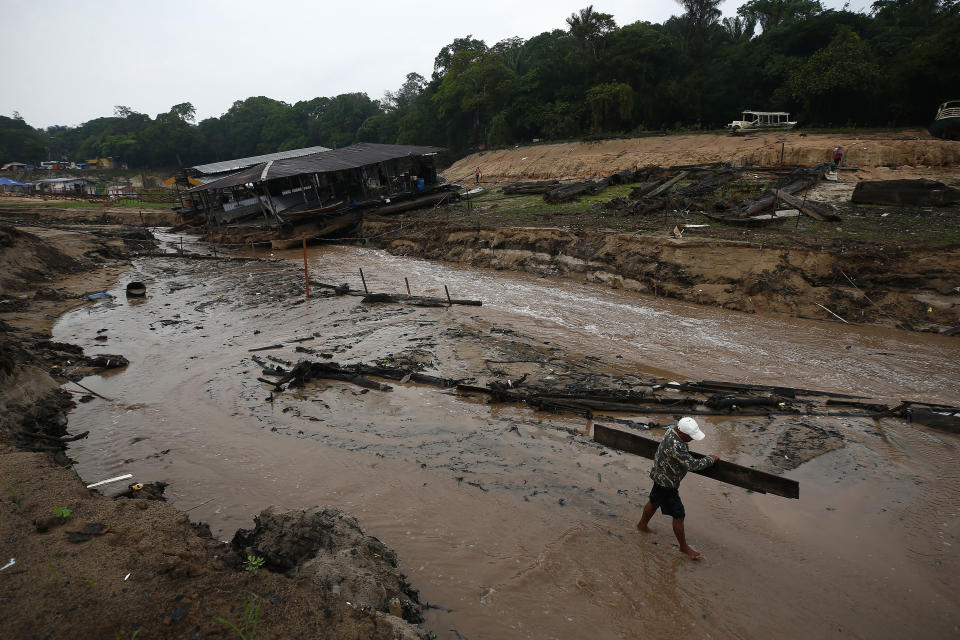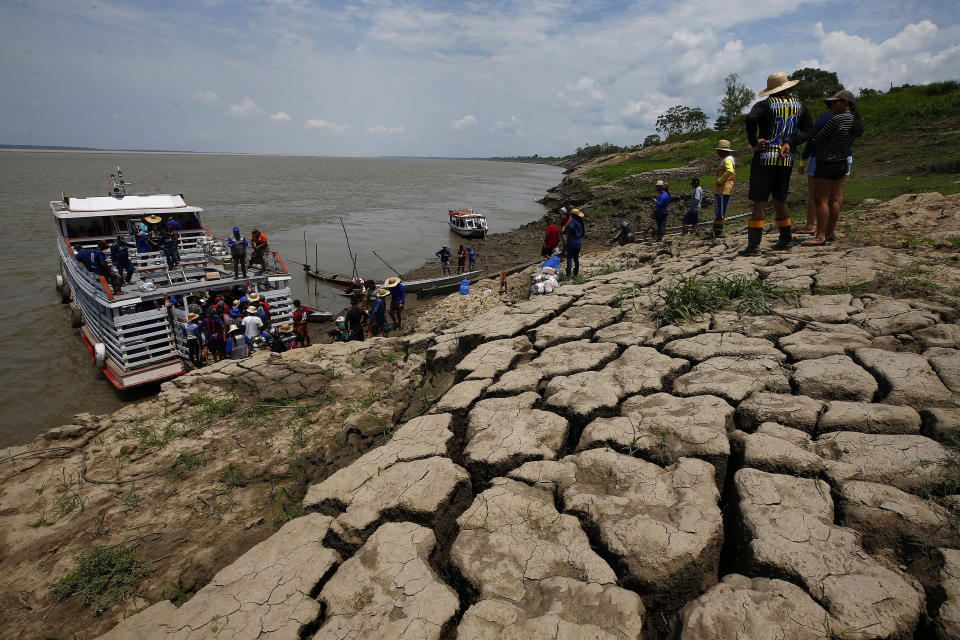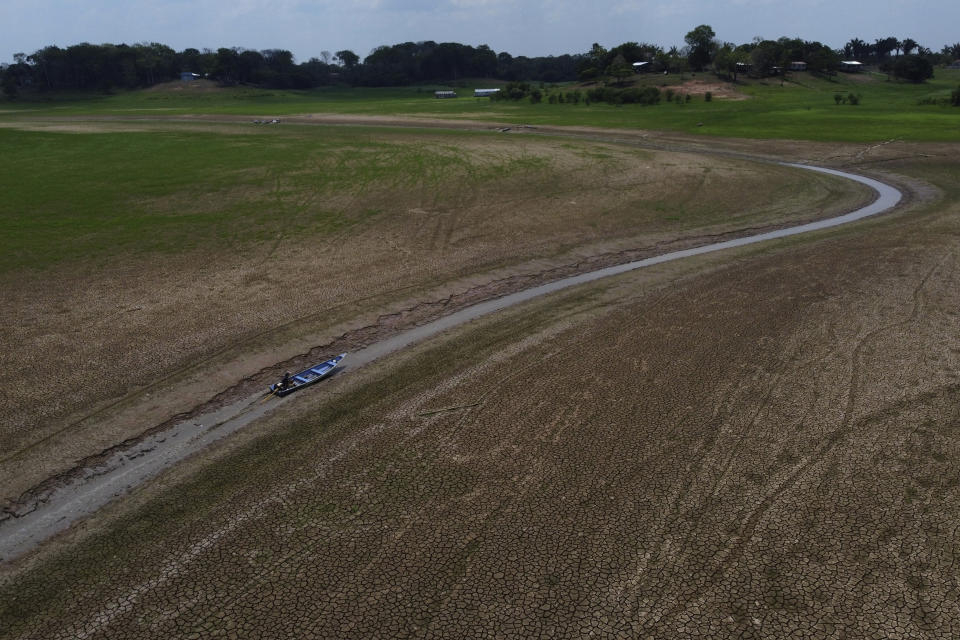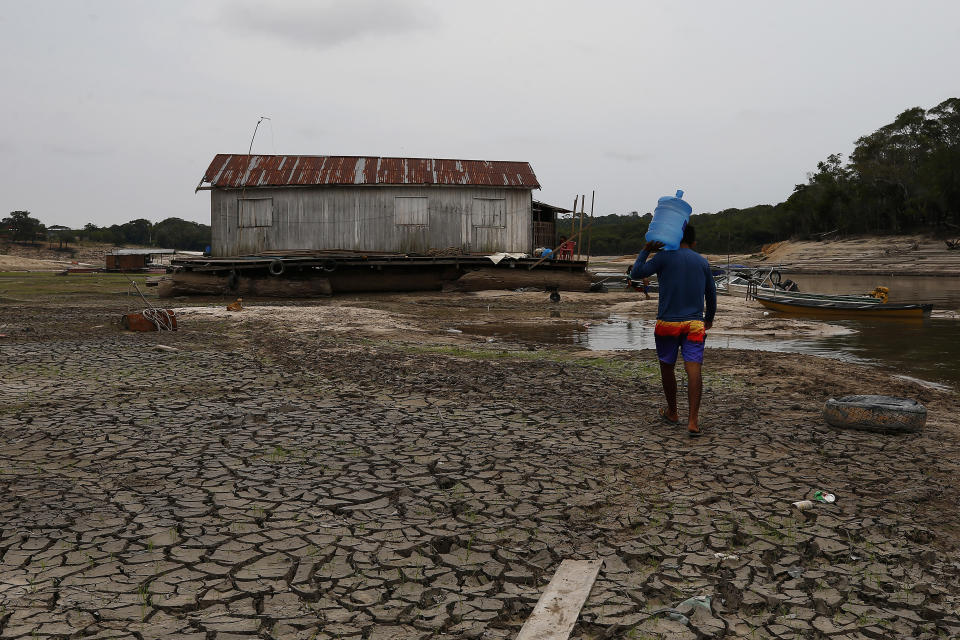Global warming was primary cause of unprecedented Amazon drought, study finds
- Oops!Something went wrong.Please try again later.
BRASILIA, Brazil (AP) — Human-induced global warming, and not El Niño, was the primary driver of last year's severe drought in the Amazon that sent rivers to record lows, required deliveries of food and drinking water to hundreds of river communities and killed dozens of endangered dolphins, researchers said Wednesday.
Both climate change and El Niño contributed about equally to a reduction in rainfall. But higher global temperatures were the biggest reason for the drought, according to World Weather Attribution, an initiative that brings together climate scientists to rapidly analyze extreme events and their possible connections to climate change.
The drought was agricultural, combining reduced rainfall with hotter conditions that evaporated moisture from plants and soil. It was that heat-driven evaporation that was critical in the drought’s severity, said study co-author Friederike Otto, a climate scientist at the Imperial College of London.
“What is now about a one-in-50-year event would have been much less likely to occur in a 1.2-degree cooler world. If we continue to warm the climate, this combination of low rainfall and high temperatures will become even more frequent,” Otto said at a news conference Wednesday.
The team uses a scientifically accepted method of running computer simulations of weather events as they would have unfolded in a fictional world without global warming, and comparing those results with what really happened.
The drought in the Amazon — the world's largest rainforest and crucial in storing away carbon dioxide that would otherwise contribute to warming — came as Earth endured the hottest year on record. The planet is closer than ever to the 1.5 degrees Celsius (2.7 Fahrenheit) increase since pre-industrial times that nations had hoped to stay within to avoid the worst consequences of climate change, such as deadly heat, rising seas, flooding and wildfires.
In Brazil's Tefé Lake, water temperatures soared to 39.1 degrees Celsius (102.4 Fahrenheit), likely causing the deaths of more than 150 pink and tucuxi river dolphins, two endangered species. Along the Amazon River, people saw their crops wither and fish disappear, and with travel impossible due to low rivers, formed long lines on riverbanks to receive relief supplies. In Manaus, the region´s largest city, the more than 2 million residents choked for months on wildfire smoke.
Study co-author Regina Rodrigues, from Federal University of Santa Catarina, said the drought underscored the Amazon's importance in the fight against climate change.
“If we protect the forest, it will continue to act as the world’s largest land-based carbon sink,” Rodrigues said in a statement. “But if we allow human-induced emissions and deforestation to push it through the tipping point, it will release large amounts of carbon dioxide, further complicating our fight against climate change.”
Luiz Candido, a meteorologist with Brazil´s National Institute for Amazon Research, which didn’t participate in the study, said the findings support the scientific consensus that climate variations in the region have escalated to extreme conditions.
But Candido also argued that interactions among the oceans, the atmosphere, and the forest are complex and it's not possible yet to separate the impacts of natural climate variability from those of human-induced global warming. He also questioned whether the study overestimated plant evaporation, noting that many Amazon plants are much deeper-rooted than crops and were able to retain much of their moisture by reaching damp, deeper layers.
___
The Associated Press’ climate and environmental coverage receives financial support from multiple private foundations. AP is solely responsible for all content. Find AP’s standards for working with philanthropies, a list of supporters and funded coverage areas at AP.org.
